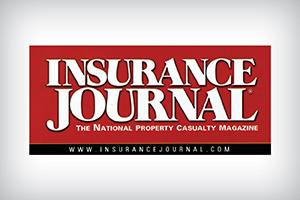How to protect pets from house fires

Pets are the perfect addition to a family as loving, loyal companions. Owning a pet comes with the responsibility of protecting them (and your home) from potential danger.
According to the National Fire Protection Association, nearly 800 home fires are started accidentally by pets each year. By implementing these simple safety tips, you can help ensure the well-being of everyone who calls your house home.
Fire prevention
- In the kitchen, keep pets away from stoves, countertops, and cooking appliances.
- Cover fireplaces with metal or heat-tempered glass screens.
- Keep pets away from candles, lamps, and space heaters – use battery-operated candles as a light alternative.
- Monitor what your pets are chewing and keep them away from electrical cords.
- Keep pets in crates or behind gates, away from hazardous areas, while you are away from home.
Plan ahead
- Have a fire safety plan – know ahead of time who is responsible for taking your pets in the event of a fire.
- Keep leashes, collars, and harnesses near entrances so they are easily accessible.
- Make sure your pets’ ID tags and microchip data are up to date.
- Use monitored smoke detectors that will alert emergency services if a fire should occur while you are away from home.
- Know your pets’ hiding spots so you can easily find them in the event of a fire.
During a fire
- Your safety is top priority - if you can’t find your pet, do not delay your escape.
- If possible, grab collars, leashes, and harnesses on the way out.
- Stay a safe distance away from the danger and allow firefighters to locate your pet.
- Try calling out to your pet once you are in a safe area.
If you want to take more proactive steps to protect your home from a fire, talk to your independent insurance agent about home coverage options.
Sources:
How to protect pets from house fires
Pets are the perfect addition to a family as loving, loyal companions. Owning a pet comes with the responsibility of protecting them (and your home) from potential danger.
According to the National Fire Protection Association, nearly 800 home fires are started accidentally by pets each year. By implementing these simple safety tips, you can help ensure the well-being of everyone who calls your house home.
Fire prevention
- In the kitchen, keep pets away from stoves, countertops, and cooking appliances.
- Cover fireplaces with metal or heat-tempered glass screens.
- Keep pets away from candles, lamps, and space heaters – use battery-operated candles as a light alternative.
- Monitor what your pets are chewing and keep them away from electrical cords.
- Keep pets in crates or behind gates, away from hazardous areas, while you are away from home.
Plan ahead
- Have a fire safety plan – know ahead of time who is responsible for taking your pets in the event of a fire.
- Keep leashes, collars, and harnesses near entrances so they are easily accessible.
- Make sure your pets’ ID tags and microchip data are up to date.
- Use monitored smoke detectors that will alert emergency services if a fire should occur while you are away from home.
- Know your pets’ hiding spots so you can easily find them in the event of a fire.
During a fire
- Your safety is top priority - if you can’t find your pet, do not delay your escape.
- If possible, grab collars, leashes, and harnesses on the way out.
- Stay a safe distance away from the danger and allow firefighters to locate your pet.
- Try calling out to your pet once you are in a safe area.
If you want to take more proactive steps to protect your home from a fire, talk to your independent insurance agent about home coverage options.
Sources:
How to protect pets from house fires
Pets are the perfect addition to a family as loving, loyal companions. Owning a pet comes with the responsibility of protecting them (and your home) from potential danger.
According to the National Fire Protection Association, nearly 800 home fires are started accidentally by pets each year. By implementing these simple safety tips, you can help ensure the well-being of everyone who calls your house home.
Fire prevention
- In the kitchen, keep pets away from stoves, countertops, and cooking appliances.
- Cover fireplaces with metal or heat-tempered glass screens.
- Keep pets away from candles, lamps, and space heaters – use battery-operated candles as a light alternative.
- Monitor what your pets are chewing and keep them away from electrical cords.
- Keep pets in crates or behind gates, away from hazardous areas, while you are away from home.
Plan ahead
- Have a fire safety plan – know ahead of time who is responsible for taking your pets in the event of a fire.
- Keep leashes, collars, and harnesses near entrances so they are easily accessible.
- Make sure your pets’ ID tags and microchip data are up to date.
- Use monitored smoke detectors that will alert emergency services if a fire should occur while you are away from home.
- Know your pets’ hiding spots so you can easily find them in the event of a fire.
During a fire
- Your safety is top priority - if you can’t find your pet, do not delay your escape.
- If possible, grab collars, leashes, and harnesses on the way out.
- Stay a safe distance away from the danger and allow firefighters to locate your pet.
- Try calling out to your pet once you are in a safe area.
If you want to take more proactive steps to protect your home from a fire, talk to your independent insurance agent about home coverage options.
Sources:
How to protect pets from house fires
Pets are the perfect addition to a family as loving, loyal companions. Owning a pet comes with the responsibility of protecting them (and your home) from potential danger.
According to the National Fire Protection Association, nearly 800 home fires are started accidentally by pets each year. By implementing these simple safety tips, you can help ensure the well-being of everyone who calls your house home.
Fire prevention
- In the kitchen, keep pets away from stoves, countertops, and cooking appliances.
- Cover fireplaces with metal or heat-tempered glass screens.
- Keep pets away from candles, lamps, and space heaters – use battery-operated candles as a light alternative.
- Monitor what your pets are chewing and keep them away from electrical cords.
- Keep pets in crates or behind gates, away from hazardous areas, while you are away from home.
Plan ahead
- Have a fire safety plan – know ahead of time who is responsible for taking your pets in the event of a fire.
- Keep leashes, collars, and harnesses near entrances so they are easily accessible.
- Make sure your pets’ ID tags and microchip data are up to date.
- Use monitored smoke detectors that will alert emergency services if a fire should occur while you are away from home.
- Know your pets’ hiding spots so you can easily find them in the event of a fire.
During a fire
- Your safety is top priority - if you can’t find your pet, do not delay your escape.
- If possible, grab collars, leashes, and harnesses on the way out.
- Stay a safe distance away from the danger and allow firefighters to locate your pet.
- Try calling out to your pet once you are in a safe area.
If you want to take more proactive steps to protect your home from a fire, talk to your independent insurance agent about home coverage options.
Sources:













